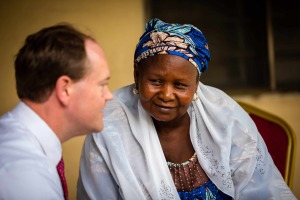Where Do John Piper, Mark Driscoll and Russell Moore Appear in 'The New Calvinism' Timeline? [INFOGRAPHIC]
To track the renascent influence of "New Calvinism," Josh Byers and Tim Challies recently used an infographpic (see below) to map the movement's apexes since 1986, the year that Minnesota pastor John Piper authored Desiring God.
The father of the theological system known as Calvinism, John Calvin (1509-1564) was a prominent French theologian during the Protestant Reformation. Martin Luther and Calvin are arguably the most significant architects of the Reformation. "If Luther sounded the trumpet for reform, Calvin orchestrated the score by which the Reformation became a part of Western civilization," according to a quote found in Theopedia.
Byers told The Christian Post that he and Challies actually took their general definition for "New Calvinism" from a secular source: a 2009 Time Magazine story that listed the movement as one of their "10 Ideas Changing the World Right Now."
"It's such a nuanced movement and there's so much that goes into it," Byers said, adding that he populated much of the chart with voices that "made up this resurgence in broader Evangelicalism and then even narrower Calvinism."
Technology played a "huge" role in the Reformed reawakening said Byers, who pointed to "the rise of the internet, the ubiquity of information, the ability for the people to have a voice through blogs, [and] also [the ability] to disseminate information freely or very, very cheaply," as the means by which the movement's message was widely disseminated.
"Churches were able to publish writings; they didn't have to go through a publishing house. Individuals were able to publish writing and thoughts. Preachers were able to podcast sermons so you have the rise of popular preachers coming. You were able to hear other voices for the first time on a consistent basis and also the conversations were able to happen in real time," said Byers.
Nancy Pearcey's 2004 book Total Truth in 2004 and Indelible Grace, a mixed-gender group which helped to take make older hymns accessible to a new generation, are the only references to women in Byers and Challies' New Calvinism infographic. Because of the movement's strong complementarian values, the graphic designer does note the trend changing as the movement continues.
"My general feeling is that the New Calvinistic movement...has been largely complementarian," said Byers. "You would expect to see the leaders of the movement be primarily men. That's not to say that women have not played a huge role in that, but as a movement which is generally complementarian in its theology, that's something you would expect to see now, and if that theology doesn't shift, I think that is something you would expect to see in the future as well.
Byers said he found the most interesting part of creating the infographic was observing the overlap between the timeline and his own personal spiritual journey.
"My journey to the 'New Calvinism' as all the cool kids are calling it, started with a short film," wrote Byers on his blog. "It was the one where Rob Bell is for whatever reason hiking in the woods with his infant son under the threat of a rainstorm. The rain did come and as Rob in his awesome glasses ran John Woo slow-mo through the trees, I thought it was the coolest Christian thing I had ever seen."
"I discovered Mark Driscoll who taught me how to love Jesus and my family. I found Tim Keller who brought the Bible to life in ways I had never considered. I listened to John Piper who rather than shaming me into a love for God, was able to inspire a love for God by showing His absolute glory and beauty," he continued.
Byers' conclusion: "In short, I am the poster child of the New Calvinist movement."






























